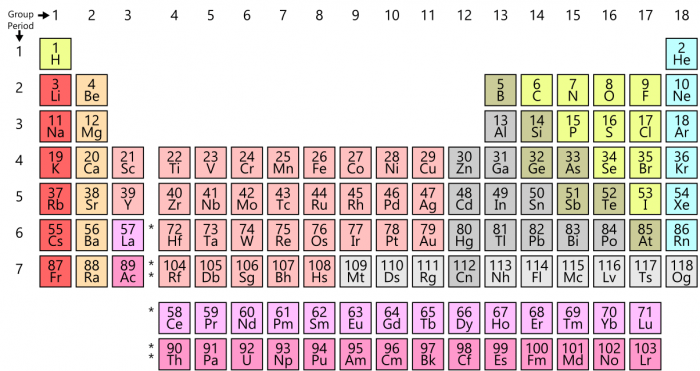
There are 7 Diatomic elements. They are Hydrogen (H2), Nitrogen (N2), Fluorine (F2), Oxygen (O2), Iodine (I2), Chlorine (Cl2), and Bromine (Br2).
In this article, we will discuss not only diatomic elements but also their monatomic counterparts. If you want to learn more about both diatomic and monatomic elements, you have come to the right place.
Diatomic Elements Vs Monatomic Elements
Diatomic elements are those elements that possess diatomic molecules. Diatomic molecules are those that are made up of two atoms bonded together instead of just one.
By contrast, the monatomic elements consist of just one atom. All the noble gasses are monatomic elements. The atomic number of each of the monatomic elements is equal to the number of protons that each of the elements is.
There are only seven monatomic elements. Here is the full list of the monatomic elements:
Helium (He).
Neon (Ne).
Argon (Ar).
Krypton (Kr).
Xenon (Xe).
Radon (Rn).
Oganesson (Og).
All these elements can exist in different numbers of neutrons (what is called “isotopes”). But, always, the number of electrons they may contain always coincides with the number of protons.
We’re not just any star stuff, most of which is humdrum hydrogen and listless helium. Our bodies include fancier ingredients like carbob, oxygen, nitrogen, phosphorus, and a few other herbs and spices. – Seth Shostak
The existence of monatomic elements is always as a single, stable, atom. For that reason, monatomic elements are sometimes confused with pure elements. But pure elements do not always consist of single atoms but do often consist of multiple atoms that are either bonded into diatomic elements (H2, N2, F2, O2, I2, Cl2, Br2) or by other molecules that consist of a single type of atom (like O3).
Although all these molecules consist of one type of atomic nucleus only, they are not monatomic. Metals, for example, are usually connected by metallic bonds, which would make them homonuclear (just one nucleus) but not monatomic (just one atom).
Full List of Diatomic Elements
There are seven diatomic elements in total. Here is the full list of all seven of them:
- Hydrogen (H2).
- Nitrogen (N2).
- Fluorine (F2).
- Oxygen (O2).
- Iodine (I2).
- Chlorine (Cl2).
- Bromine (Br2).
Each and every one of the diatomic elements is a nonmetal. Halogens are a special kind of nonmetal elements.
For example, Bromine (Br2) is a liquid when kept at room temperature but all the other elements in the list of diatomic elements are gases under normal conditions. But if the temperature is made lower or if the pressure increases considerably, then all the other elements in the list become diatomic liquids.
There are some slightly problematic elements because of their behavior. For example, Astatine (At) with atomic number 85 and Tennessine (Ts) with atomic number 117 do belong in the halogen group, too, and do sometimes form diatomic molecules. Having said all of that, some scientists make the prediction that tennessine’s behavior would be more like that of a noble gas.
The Mnemonic Technique
If you have made it this far into an article about diatomic elements, there is a big chance that you are a student. But whether you need to learn what the diatomic elements are and remember their names for an exam or just because you want to know them, there is a rather simple mnemonic technique to remember not just their names, but also their order in the periodic table.
All you will have to do is remember the following silly phrase: Have No Fear Of Ice Cold Beer. Each of the initials of the words that make up that simple phrase coincides with the first letter of not just the full name of the elements but also the first letter of their symbol (or in the case of Chlorine and Bromine, the two last elements in the list, the first letter of their symbol).
Let us just look at the list side by side to the phrase in order to show exactly how it works:
Have = Hydrogen (H2).
No = Nitrogen (N2).
Fear = Fluorine (F2).
Of = Oxygen (O2).
Ice = Iodine (I2).
Cold= Chlorine (Cl2).
Beer = Bromine (Br2).
What Characterizes the Diatomic Elements?
As we have seen, there are many things that characterize the diatomic elements and set them apart from the monatomic elements. Let us summarize all the main characteristics of the diatomic elements here before we conclude this article.
In a nutshell, the diatomic elements are those elements in the Periodic Table that are pure and can form molecules that consist of not one but two atoms that are bonded together.
In contrast, the pure elements that consist of only one atom are known as the monatomic elements.
There are only seven diatomic elements, which are Hydrogen (H2), Nitrogen (N2), Fluorine (F2), Oxygen (O2), Iodine (I2), Chlorine (Cl2), and Bromine (Br2).
All the different diatomic elements can also exist in pure form but in different arrangements. These are, for example, the diatomic compounds. Hydrogen chloride, carbon monoxide, or nitric oxide do all have diatomic molecules. In essence, what that means is that they are all gasses at room temperature. Because their atomic nuclei have its origin in different elements, scientists refer to them as heteronuclear.

Photo: Offnfopt via Wikimedia Commons, Public Domain
Some of these elements can become a gas if the temperature is increased above “room temperature”. Others can become liquid if the temperature is lowered enough. That is the case most notably of nitrogen and oxygen, but also of some other diatomic molecules.
Such is the behavior of the diatomic elements. If you would like to know more about the diatomic elements (and the monatomic elements), you should consult quality chemistry textbooks. This article is just a brief introduction to this fascinating topic. If you require more research into all of these elements or some of them specifically, you should head over to a well-stocked science library.









